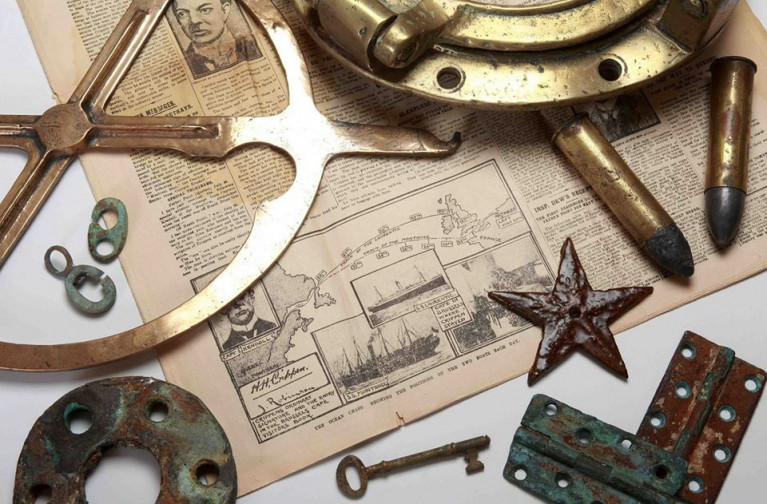Displaying items by tag: Tower Museum
In Derry~Londonderry the Tower Museum recently released some fascinating new 'online' collections celebrating the north-west city-port and district’s rich maritime heritage.
Detailed diaries from transatlantic journeys and lists of the museum’s archive collection are among the information being made public on the museum’s website.
Bernadette Walsh, Archivist at the Tower Museum, said the archives will allow the public to explore maritime life in the city over the last 300 years.
“Our Maritime Collections are among the most important in the Council’s collection and will be the mainstay of the new DNA Museum at Ebrington.
“We have many archive collections offering unique insights into the importance of the city as an internationally significant port since the 17th century.
“Our shipping archives, in particular those of William Mitchell and Sons, show the importance of the steel hulled barques that set sail from the Foyle around the world, chartering goods as far as Argentina and Australia.
“Other archives give a unique insight into life on the quays, with advertisements for shipping goods, warning signs for theft and poor behaviour as well as beautiful art showcasing the development of the port over the years.
“While we will be showing some of these collections online, we would encourage visitors to our website to download our lists and get in touch if they would like to know more detail.”
The collections will also feature diaries detailing numerous journeys across the Atlantic to the Americas from the viewpoint of a well-known Solicitor, Patrick Maxwell, who lived in the east wall at the turn of the century.
Mr. Maxwell, with a combination of great humour, wit, sincerity and detailed observation, gives a wonderful insight into the trials and tribulations of travelling across the Atlantic on three occasions between 1897 and 1901.
Much of these were published in the 'Derry Journal' but included in his own diaries are photographs of life on board, as well as detailed scrapbooks showing leaflets and souvenirs from his journey.
He describes the people on board, the excitement of travelling, the hardship of poverty and seasickness, culminating in the awe of seeing the lights of New York, Boston and Quebec for the first time.
The collections are available on the museum’s new website: www.towermuseumcollections.com
Ronan McConnell, Tide Project Officer said the Tower Museum plan to further develop these stories in a new visitor virtual experience as part of the TIDE project, funded by Interreg Europe.
“We are excited to also launch our new website,” he added.
“One of the major outcomes for us in the wake of the COVID-19 pandemic and the closure of the museum has been the increased moving of our collections online.
“The fast moving pace of virtual technology is opening up many new possibilities for the public to engage with our collections.
“We are very excited about this and we look forward to sharing more of these collections with the public as we go forward.
“The online material acts as a great resource and complements our new temporary exhibitions, ‘Dividing Ireland’ in the Tower Museum and ‘If Stones Could Speak’ in the Alley Theatre.
“We have also updated our learning and engagement on the new website. Our range of learning programmes help to make local heritage accessible to all, especially our younger citizens.”
The Tower Museum offers a wide variety of packages aimed at Key Stage 2 and 3 which includes guided tours/trails of our exhibitions and workshops. We provide outreach services and educational resources for school.
New learning packs have been developed featuring multiple choice worksheets, for use in the classroom with added activities to make learning fun.
The topics covered are: First World War, Second World War, Armada and Plantation/Siege.
The Community Engagement is available to Voluntary, Community and Statutory Bodies and includes reminiscence through the use of our themed loan boxes.
There is also a dedicated Dementia programme which offers reminiscence sessions, recently developed in partnership with Northern Ireland Museum Council our Love to Move programme, which incorporate exercise and reminiscing for people living with dementia.
The Museum has also developed a Live Well programme which is aimed at Community groups in the Derry City and Strabane District Council area.
This programmes is aimed at the over 50s who do not usually access museums.
The goal is to promote wellbeing through connection to the museum’s collections and through related creative activities, such as glass painting, drawing and decoupage.





























































